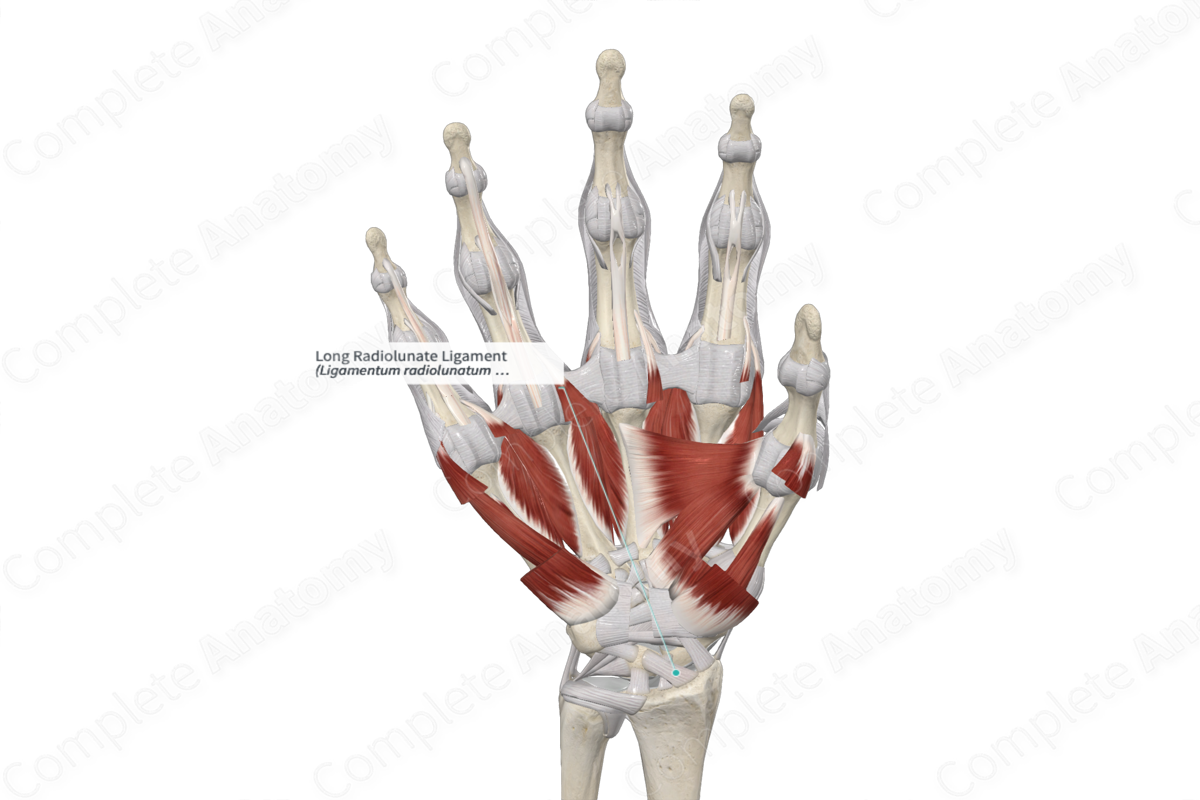
Anatomical Relations
The long radiolunate ligament forms part of the palmar radiocarpal ligament. Just adjacent to the radioscaphocapitate ligament, the long radiolunate ligament arises from the palmar lip of the distal radius. It passes over the proximal part of the scaphoid to insert into the palmar surface of the lunate.
Related parts of the anatomy
Function
The palmar radiocarpal ligament strengthens the articular capsule of the radiocarpal joint. The oblique nature of the ligaments ensures that the hand follows the radius during supination of the forearm (Moore et al., 2013). Additionally, the long radiolunate ligament supports the proximal pole of the scaphoid bone as it passes over its proximal pole to insert into the lunate (Standring, 2016).
References
Moore, K. L., Dalley, A. F. and Agur, A. M. R. (2013) Clinically Oriented Anatomy. Clinically Oriented Anatomy 7th edn.: Wolters Kluwer Health/Lippincott Williams & Wilkins.
Standring, S. (2016) Gray's Anatomy: The Anatomical Basis of Clinical Practice. Gray's Anatomy Series 41st edn.: Elsevier Limited.
Learn more about this topic from other Elsevier products
Joint Ligament

Entheseal structures are widely located throughout the body and are represented by the interface between bone and several tissues including tendon, joint capsules and ligaments.



